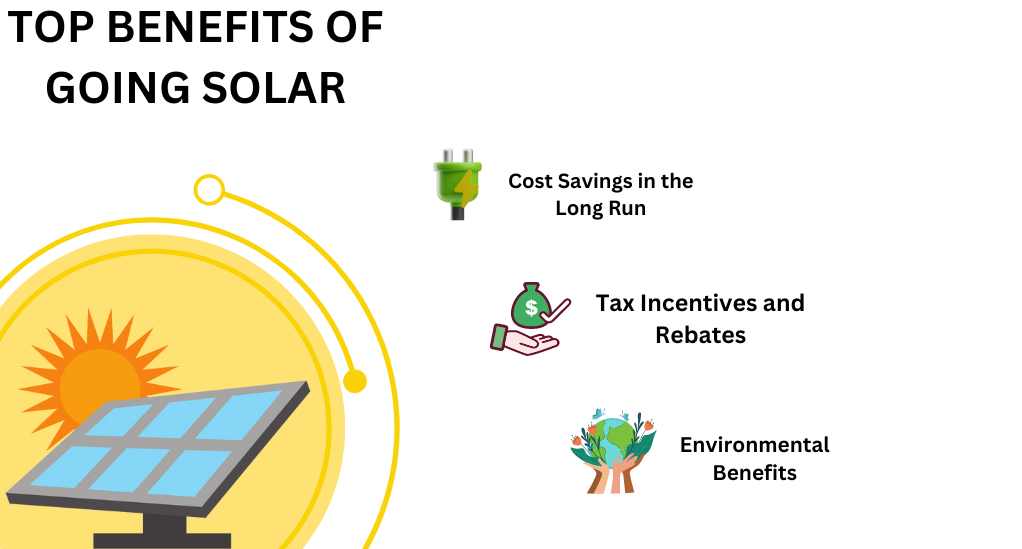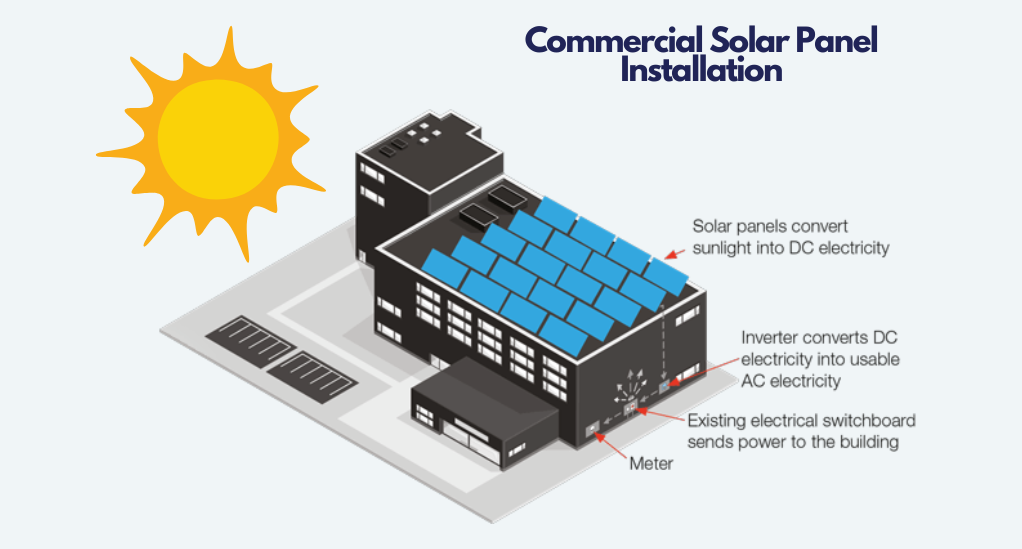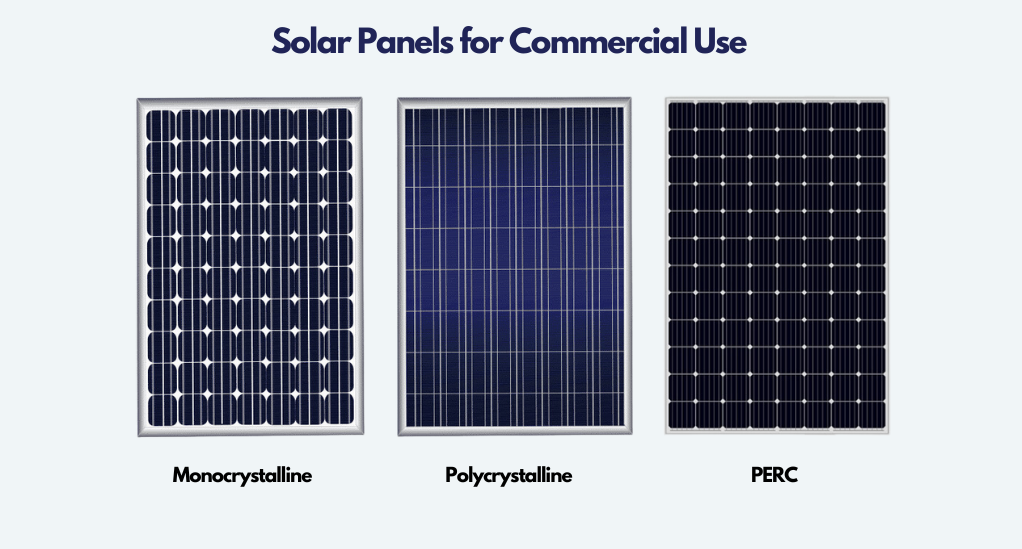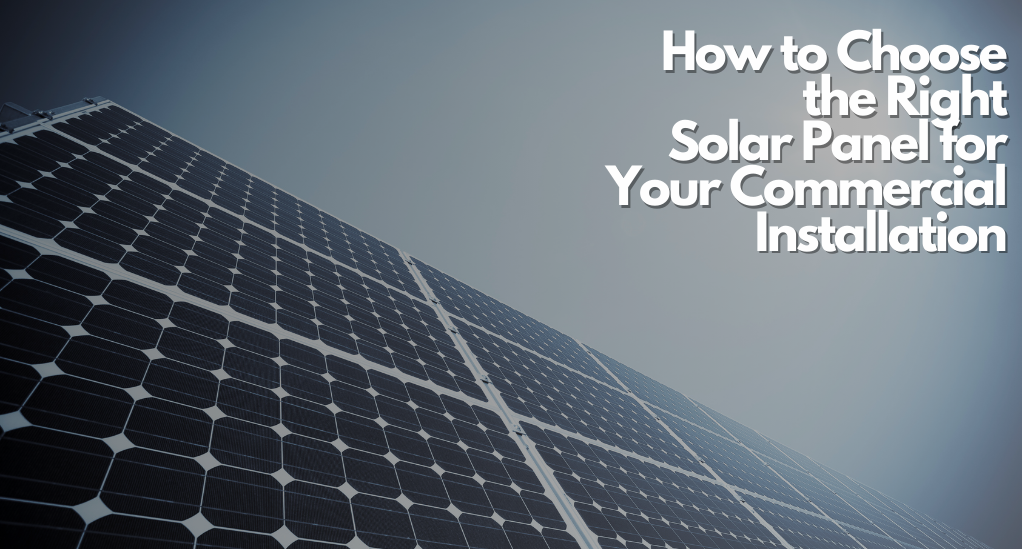The transition to renewable energy sources is not just a trend; it’s a necessity for a sustainable future. As businesses look to reduce their carbon footprint and save on energy costs, commercial solar installations have become increasingly popular. However, the process of selecting the right solar panel for your commercial property can be daunting, given the plethora of options available. This article aims to be your comprehensive guide in making that crucial decision. From understanding the nuances of commercial solar energy to exploring various types of solar panels and their installation methods, we’ve got you covered.
The stakes are high when it comes to commercial solar installations. A wrong choice can not only lead to inefficient energy production but also result in financial setbacks due to maintenance and replacement costs. Therefore, it’s crucial to make an informed decision that aligns with both your energy needs and budget constraints.
Why Go Solar?

The decision to switch to solar energy for your commercial property is a multifaceted one, influenced by various compelling factors. Here are the top three reasons why going solar is an excellent choice for businesses:
Environmental Benefits
In an era where climate change is a pressing concern, adopting renewable energy sources like solar power is more crucial than ever. Solar panels produce clean, green energy that significantly reduces your carbon footprint. Unlike fossil fuels, solar energy doesn’t emit harmful greenhouse gases, making it an eco-friendly option. By going solar, you’re not just cutting costs; you’re contributing to a sustainable future for the planet.
Cost Savings in the Long Run
While the initial investment in solar panels can be substantial, the long-term financial benefits are undeniable. Solar energy can drastically reduce your electricity bills, and in some cases, you might generate excess energy that you can sell back to the grid. Over time, these savings can be substantial, offering a return on investment that makes the initial costs worthwhile. Moreover, solar panels have a long lifespan, often exceeding 25 years, which means you’ll be reaping the benefits for decades.
Tax Incentives and Rebates
One of the most attractive aspects of commercial solar installations is the availability of various financial incentives. In the United States, the federal Solar Investment Tax Credit (ITC) can cover up to 26% of the installation costs. Many states also offer additional tax credits, rebates, and grants, making solar energy an even more financially appealing option.
Going solar is not just an environmentally responsible choice but also a financially sound investment, thanks to long-term cost savings and attractive tax incentives.
Understanding Commercial Solar Energy
Navigating the world of solar energy can be complex, especially when distinguishing between residential and commercial systems. This section aims to clarify these differences, identify the types of businesses that can benefit, and explain the basic mechanics of how commercial solar panels work.
How Commercial Solar Panels Differ from Residential Ones
| Feature | Commercial Solar Panels | Residential Solar Panels |
|---|---|---|
| Size | Larger | Smaller |
| Efficiency | Higher | Lower |
| Cost | More Expensive | Less Expensive |
| Installation Location | Multiple Options | Primarily Roofs |
Commercial solar panels are generally larger and more efficient, designed to meet the higher energy demands of businesses. They are often installed in arrays to maximize energy production, and the installation locations can vary from rooftops to parking lots and even unused land.
Types of Businesses That Can Benefit
Virtually any business with a physical location can benefit from a solar installation. This includes:
- Office Buildings
- Warehouses
- Retail Stores
- Manufacturing Plants
- Educational Institutions
The Basic Mechanics of How They Work
Commercial solar panels operate on the same fundamental principle as residential ones: they convert sunlight into electricity. Photovoltaic cells within the panels capture sunlight and generate direct current (DC) electricity. This DC electricity is then converted into alternating current (AC) through an inverter, making it usable for commercial operations.
Understanding the nuances between commercial and residential solar panels, the types of businesses that can benefit, and the basic mechanics of solar energy can empower you to make an informed decision for your commercial property. This knowledge serves as the foundation for diving deeper into the specifics of solar panel selection, installation, and maintenance.
Where Can You Install Commercial Solar Panels?

Choosing the right location for your solar panel installation is crucial for maximizing energy production. Here, we’ll explore the various options available for commercial properties.
Roof Installations
The most common location for solar panel installations is the roof. Commercial buildings often have expansive, flat rooftops that are ideal for large solar arrays. The panels can be installed using ballasted racking for flat roofs or attached racking for sloping roofs. The key advantage is the minimal use of additional land space, allowing businesses to utilize existing structures effectively.
Solar Carports in Parking Lots
An innovative approach to solar installations is the use of solar carports in parking lots. These are essentially open-air garages with solar-paneled roofs. Not only do they generate electricity, but they also offer shade for parked cars. This is an excellent option for businesses with large parking areas and serves a dual purpose.
Ground-Mounted Solar Arrays
For businesses with ample unused land, ground-mounted solar arrays are a viable option. These installations can be customized to the landscape and offer the flexibility to install a large number of panels, thereby increasing energy production.
Advantages and Considerations for Each Type of Installation
- Roof Installations
Advantages: Utilizes existing structures
Considerations: Roof condition and load-bearing capacity - Solar Carports
Advantages: Dual-purpose (energy + shade)
Considerations: Requires large parking area - Ground-Mounted Arrays
Advantages: High energy production
Considerations: Requires unused land
Innovative Places for Installations
Some businesses are getting creative by installing solar panels on building facades or even as part of the landscaping. These innovative approaches not only serve as architectural features but also contribute to energy production.
The location of your solar panel installation can significantly impact its efficiency and utility. Whether you opt for roof installations, solar carports, or ground-mounted arrays, each comes with its own set of advantages and considerations.
Factors That Impact the Cost
When considering a transition to solar energy for your commercial property, understanding the cost factors is crucial for budgeting and decision-making. Here’s a breakdown of the key elements that can influence the overall cost of your solar panel installation.
Size of the Installation
The larger the installation, the higher the initial cost will be. However, it’s essential to consider that a more extensive system will also generate more energy, potentially leading to greater long-term savings. The size of the installation is usually determined by your energy needs, available space, and budget.
Type of Solar Panel
Different types of solar panels come with varying costs and efficiencies. Monocrystalline panels are generally more efficient but also more expensive, while polycrystalline panels are more budget-friendly but less efficient. The choice between the two should be based on your specific energy needs and financial constraints.
Structural Considerations of the Building
The condition and type of your building’s roof or other installation locations can impact the cost. For instance, a roof that requires reinforcement to support the solar panels will incur additional expenses. Similarly, ground-mounted installations may require land leveling, adding to the cost.
Tax Incentives That Can Offset Costs
Various tax incentives and rebates can significantly reduce the overall cost of your solar installation. The federal Solar Investment Tax Credit (ITC) can cover up to 26% of the installation costs, and many states offer additional incentives. It’s crucial to research and apply for these benefits to make the most of your investment.
Understanding these factors can provide you with a comprehensive view of the potential costs involved in a commercial solar installation. By considering the size, type of panel, structural requirements, and available tax incentives, you can make an informed decision that aligns with your business objectives and budget.
Types of Solar Panels for Commercial Use

Selecting the right type of solar panel is a critical step in your journey toward sustainable energy. The market offers various options, each with its own set of advantages and drawbacks. Here, we’ll explore the three most common types of solar panels used in commercial settings: Monocrystalline, Polycrystalline, and PERC panels.
Monocrystalline Panels
Monocrystalline panels are made from a single crystal structure and offer the highest efficiency rates, typically around 15-20%. They are also the most expensive option but can be a wise investment if high efficiency is a priority for your business.
Polycrystalline Panels
Polycrystalline panels are made from different crystal structures melted together. They are generally less efficient, with rates around 13-16%, but come at a lower cost. If budget constraints are a significant concern, polycrystalline panels can be a viable option.
PERC Panels
Passivated Emitter and Rear Cell (PERC) panels are a variation of monocrystalline panels but with an additional layer that increases efficiency and performance. They are an excellent choice for businesses looking for a balance between cost and efficiency.
Comparing Efficiency and Cost
| Type of Panel | Efficiency | Cost |
|---|---|---|
| Monocrystalline Panels | High (15-20%) | Expensive |
| Polycrystalline Panels | Moderate (13-16%) | Budget-friendly |
| PERC Panels | High (up to 22%) | Moderate |
Understanding the differences in efficiency and cost between these types of panels can help you make an informed decision tailored to your specific needs and budget constraints.
How to Size Your Commercial Solar System
Determining the appropriate size for your commercial solar system is a critical aspect of the planning process. An undersized system will fail to meet your energy needs, while an oversized one will result in unnecessary costs. Here’s a step-by-step guide to help you size your commercial solar system accurately.
Calculating Your Business’s Hourly Energy Needs
The first step is to calculate your business’s hourly energy consumption. You can do this by reviewing your electricity bills to find your monthly usage in kilowatt-hours (kWh) and then dividing that by the number of hours your business operates each month. This will give you an average hourly energy requirement.
Factoring in Peak Sunlight Hours
The next step is to consider the peak sunlight hours in your location. Peak sunlight hours refer to the number of hours in a day when the solar irradiance averages about 1,000 watts per square meter. You can find this information through local meteorological data or solar calculators available online.
Determining the Total Wattage Needed
Finally, you can determine the total wattage needed for your solar system. Multiply your average hourly energy requirement by the number of peak sunlight hours to get the daily energy needs. Then, divide this by the efficiency rate of the chosen solar panel type to get the total wattage.
| Step | Formula |
|---|---|
| Hourly Energy Needs | Monthly kWh / Monthly Operating Hours |
| Daily Energy Needs | Hourly Energy Needs x Peak Sunlight Hours |
| Total Wattage Needed | Daily Energy Needs / Panel Efficiency Rate |
By following these steps, you can accurately size your commercial solar system to meet your specific energy needs and budget constraints.
Installation Methods
Once you’ve determined the size and type of solar panels you need, the next crucial step is the installation process. The method of installation can vary depending on the type of roof your commercial building has and other structural considerations. Here, we’ll explore the most common installation methods and why professional installation is essential.
Ballasted Racking for Flat Roofs
For commercial buildings with flat roofs, ballasted racking systems are often the go-to choice. These systems use weighted blocks to secure the solar panels in place, eliminating the need for roof penetrations. This method is not only quicker but also less invasive, preserving the integrity of your roof.
Attached Racking for Sloping Roofs
If your commercial building has a sloping roof, attached racking systems are more suitable. These systems are anchored directly to the roof, providing a secure foundation for the solar panels. While this method may require more time and structural modifications, it offers a more stable and long-lasting solution.
Importance of Professional Installation
Regardless of the method you choose, professional installation is crucial for several reasons:
- Safety: Incorrect installation can pose safety risks, including electrical hazards and potential roof damage.
- Efficiency: A professional will ensure that the panels are positioned to maximize sunlight exposure, thereby increasing the system’s overall efficiency.
- Warranty: Many solar panel warranties require professional installation, failing which the warranty may become void.
By entrusting the installation to certified professionals, you ensure that the system is set up correctly, safely, and in compliance with all relevant regulations and warranties.
Rebates, Tax Credits, and Other Incentives
One of the most compelling aspects of transitioning to solar energy for your commercial property is the array of financial incentives available. These incentives can significantly offset the initial costs and make solar energy an even more attractive investment. Here, we’ll delve into the key incentives you should be aware of and how to qualify for them.
Federal Solar Investment Tax Credit (ITC)
The federal Solar Investment Tax Credit (ITC) is a significant financial incentive for businesses in the United States. Currently, the ITC allows you to deduct 26% of the cost of installing a solar energy system from your federal taxes. This percentage is slated to decrease in the coming years, making now an opportune time to invest in solar energy.
State-Level Incentives
In addition to federal incentives, many states offer their own set of tax credits, rebates, and grants. These can vary widely from state to state, so it’s essential to research the specific incentives available in your location. Some states even offer performance-based incentives, which provide additional financial benefits based on the amount of energy your system produces.
How to Qualify and Apply
Qualifying for these incentives usually involves the following steps:
- Consult a Tax Advisor: To understand the full scope of available incentives and how they apply to your business.
- Choose Eligible Equipment: Ensure that the solar panels and related equipment you choose meet the criteria for federal and state incentives.
- Submit Necessary Documentation: This often includes invoices, proof of payment, and certification that the system is operational.
By taking advantage of these financial incentives, you can significantly reduce the overall cost of transitioning to solar energy, making it a financially viable and sustainable choice for your business.
Conclusion
Transitioning to solar energy for your commercial property is a significant but rewarding undertaking. From understanding the different types of solar panels and their efficiencies to navigating the various installation methods and financial incentives, this guide has aimed to provide you with a comprehensive roadmap. The benefits of going solar extend beyond just cost savings; they contribute to a sustainable future and a reduced carbon footprint. As you take this crucial step, remember that making informed decisions based on accurate information is key to maximizing your investment and achieving long-term sustainability.

